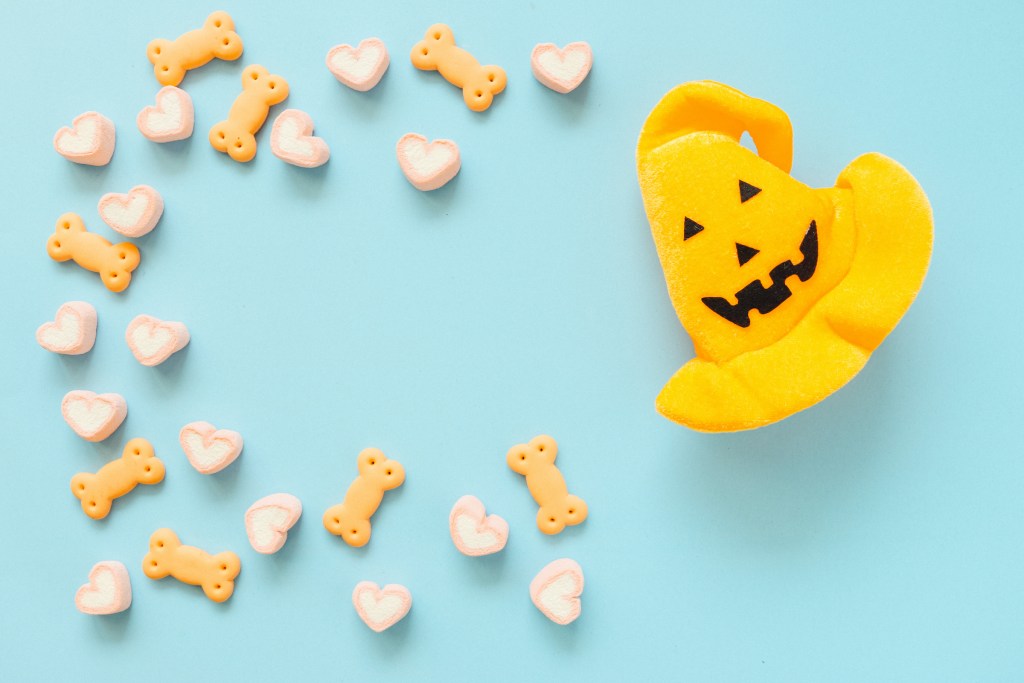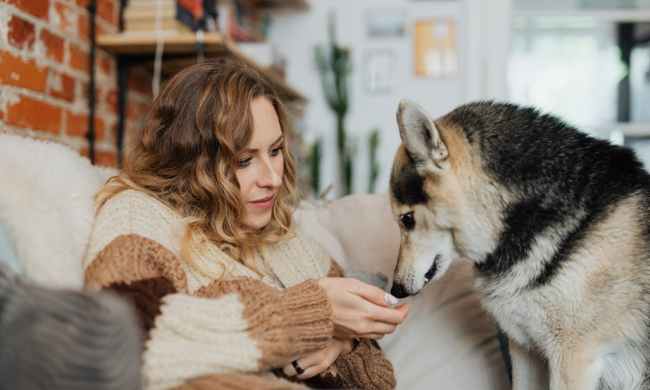Halloween treats for dogs are in no short supply, especially if you’re a pet parent who likes to make dog treats from home. With just a few seasonal ingredients and some time to spend in the kitchen, anyone can bring these fun recipes to life. Trust us, your dog will certainly be glad you did! And with treats this adorable, even the trick-or-treaters will be jealous.
If you’re feeling creative, go ahead and customize any of these recipes to your liking. Different shapes and decorations are fun ways to make these snacks a creation all your own. (Though be sure to use only dog-safe ingredients!) These cute and creepy dog Halloween treats will leave your furry friend drooling for more this October. Here are a few of our frightening favorites:

Halloween Eyeball Gelatin Gummy Dog Treats
These layered gelatin treats are just as fun for you to make as they are for your pup to devour on Halloween night. Laura from Dalmatian DIY notes that it will take a bit of time to make, then harden, each layer, so grab a pumpkin spice latte and get comfy at home before you begin. Here’s what you’ll need for these treats:
- 1 cup cool, unsalted, unseasoned chicken stock
- 3½ tablespoons powdered gelatin
- Natural coloring for your treats (spirulina and beetroot powder for the pupils, turmeric for the irises, and yogurt or kefir for the whites of the eyes)
- A food-safe gelatin mold
You can make things easy for yourself by concocting one batch of gelatin to use for all the layers (follow the directions on the gelatin packaging), using chicken stock instead of water. Then, you’re ready to divide your mixture and add the colors.
Start by mixing spirulina and beetroot powder into a tiny batch to make the pupils of the eye. Use a dropper or spoon to make careful dots in the center of your molds, then set the molds in the fridge to cool while you prep the next layer. Once the pupil is hardened, you can pour your next colored layer (the irises) over it slowly — then cool in the fridge again. For the whites, you’ll complete the same process with a gelatin/yogurt mixture, filling all the way to the tops of the molds.
Check out Dalmatian DIY’s recipe for more detailed, step-by-step instructions.
DIY Skeleton Bones Dog Treats
These ghoulish goodies combine a classic Halloween symbol with a popular chew for dogs — bones, of course! Thanks to Aimee and Irresistible Pets for the recipe. You’ll need to gather these ingredients:
- 1½ cups all-purpose flour, unbleached
- 1 egg
- 1 cup water
- 1 chicken bouillon cube
You’ll also need 1 cup of nonfat plain yogurt and another ½ cup of water for the icing that envelops these goodies. A bone-shaped mold is another must-have! To make these mouthwatering cookies, just mix all the ingredients into a dough, press dough into each bone in the mold, and bake at 350 degrees for 30 minutes.
Once they’re baked and cooled, mix together your icing ingredients and coat each cookie thoroughly. A trip to the freezer will help the icing harden and keep the treat fresh for longer, too.

Easy Homemade Halloween Pumpkin Dog Treats
For a reinvented take on the classic pumpkin, check out this supereasy recipe from Dalmatian DIY. The best part? You need only two ingredients (plus water), though a frozen green pea garnish takes these cookies to the next level. You’ll need:
- About ½ to ¾ cup brown rice flour
- 1 small jar pumpkin baby food or ½ cup plain pureed pumpkin
- Water as needed
Start by heating your oven to 350 degrees, then mix small amounts of flour into your baby food until it reaches the consistency of a dough. If the mixture gets too hard or crumbly, just add a bit of water.
To create your pumpkins, roll the dough into small balls and place them on a cookie sheet. Flatten out the balls with the palm of your hand, then press the thin, flat side of a fork or knife into the dough to make a line running down the middle. Laura, the creator of this recipe, used the curved sides of a spoon to make lines on each side of the middle one for a more rounded, pumpkin-esque, effect. Check out her blog post for step-by-step pictures!
Whichever treat (or treats) you decide to indulge your pup in this October, don’t forget to arrange some festivities for yourself, as well. Enjoy the fall colors with your dog, cuddle on the couch for some spooky movies, or take that extra trip to the pumpkin patch! Fall comes only once a year, after all.



